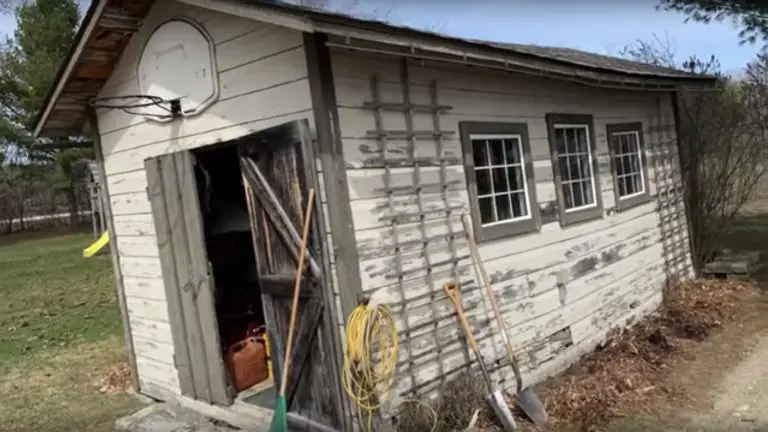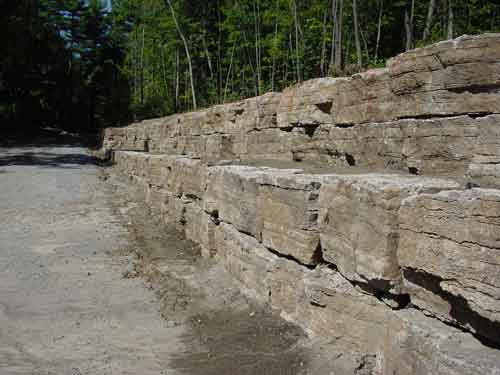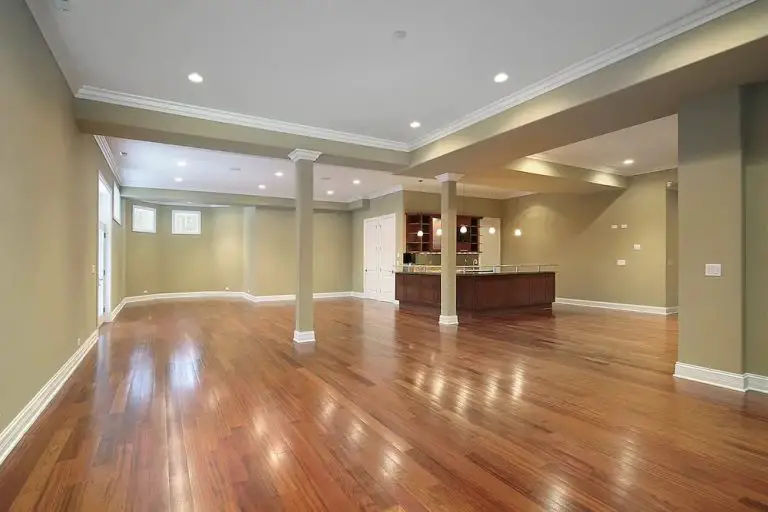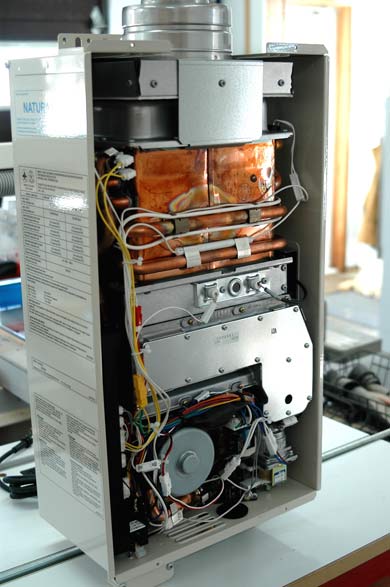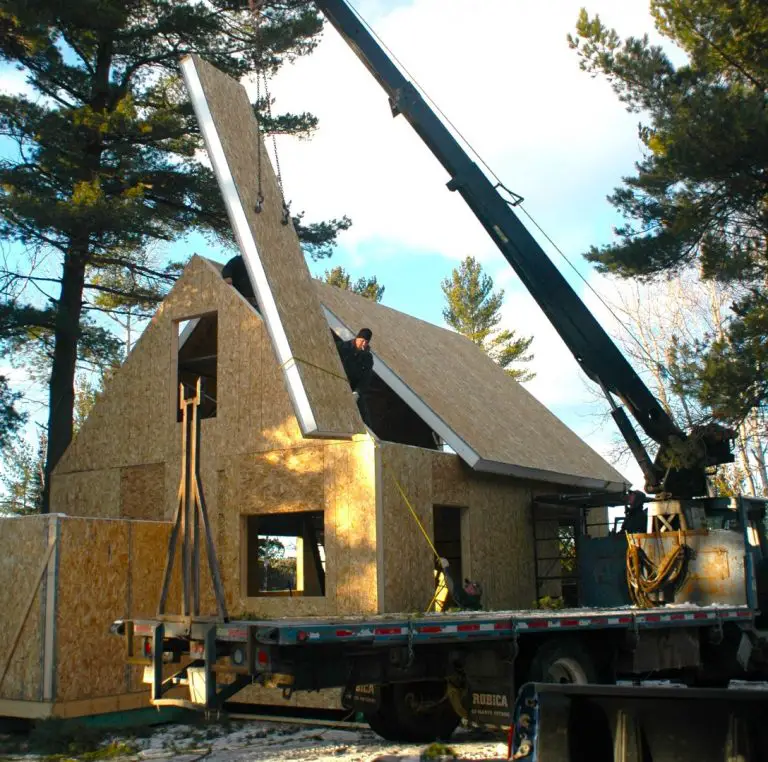- Video#1 Watch Time = 1 1/2 minutes
- Video#2 Watch Time = 7 1/2 minutes
There’s a lot to love about brick construction, and the two videos here show some of the reasons it’s easy to like bricks and why you might want to consider using them if you’re building new or adding a major addition to your house.
The video below is a tour of a brick plant I visited a few years ago. It’s the largest plant of its kind in North America, and it’s capable of putting out 800,000 bricks a day with only a 7-person crew running the place
LOVE BRICK VIDEO TRANSCRIPT: Masonry in general is the most sustainable and environmentally sound building material in the world, and bricks in particular offer some specific benefits. First, brick has one of the longest working lives of all building materials, reducing the annual environmental impacts substantially compared with other materials, simply because brick lasts so long. Any decent brick will last much longer than a mere 100 years. And some of the brick buildings you see here have outlived many generations of people all while delivering great beauty. There’s also nearly zero waste produced by clay brick manufacturing, the world’s most popular masonry materials for building homes.
Manufacturing bricks is a simple process that creates a trustworthy finished product. Here, you can see waste clay being reworked back into the brick making process to make new bricks in a brick factory. Bricks are also non-toxic during and after manufacture. Both brick and stone come from the Earth. Here, you can see the kind of shale rock that’s ground into a powder to create the clay used to make modern bricks. Shale is as safe as dirt or any other kind of rock you’ll see anywhere. All types of masonry are easily and safely recyclable as well when their working lives are over. Bricks and stone can be reused and repurposed. Most masonry building materials are made from locally sourced components. The bricks you see being manufactured here at the Brampton Brick Plant in Ontario, Canada are made with materials quarried only about 10 miles away.
BRICK PLANT VIDEO TRANSCRIPT: In October of 2018, I had the chance to take a detailed technical tour of the Brampton Brick plant. This is the largest brick manufacturing facility in North America and plant manager Ziggy Pabla led me through the tour.
The bricks at this plant are made from clay that comes from ground-up shale rock. The large reddish-brown lump on the left side is red shale and the one right next to it is gray shale, and they’re pulverized and combined as a raw material. The larger whitish lump to the right is gypsum and that’s an impurity that’s removed from the deposit before grinding.
The shed in the background is where the pulverized shale rock coming from the quarry is stored. It’s transported to the plant itself for further processing through that overhead conveyor system you see. The pulverized shale is transported by that conveyor over to this area here. There’s a series of hoppers and some further grinding and refinement goes on in this place.
Modern brick plants use a process of extrusion where the clay powder is mixed with water [inaudible 00:01:15] about an 11% moisture content. It’s squeezed through this extruding dye with the excess peeled off like you see here. This whole end of the process is powered by this 600 horsepower motor. There are several lines like this in the Brampton Brick plant. They all have motors like this for that extrusion process.
While I was at the plant, the machinery shut down for a little while and I had a chance to grab some of this extruded clay. I was surprised how hard it was. Sort of like plasticine, but drier and harder and shiny on one side like you see here. At this stage, the extrusion is like one long brick and it gets its coloring and decorative treatment as that extrusion rolls along the next stage of the line. Part of the decorative treatment involves applying sand periodically as the extrusion moves along and this creates different colors and textures when the brick is finished and fired.
The brick they’re working on in this batch is distressed, which means the corners have irregularities on them to make them look old, and that’s what these rollers are doing right here. This process would have happened before the coloring and the sand application. This is an electric eye here that’s measuring the coloring of the brick to make sure it’s up to specs. Normally, the extrusion would be whipping by, but it’s stopped here, as I mentioned, for a few minutes and I can get a look at that.
Now, a little while later, the line was still stopped and the clay started to dry out, so we see some cracks there which means that this whole run is more or less useless. So, when the plant fired back up again, all those cracked chunks were broken up and sent by this conveyor back to that grinding facility that I told you about initially. Now, here the extrusions are being cut to a particular length so that they can be further processed down the line into actual brick shapes.
The cut lengths of extrusion are forced through a series of wires that actually slices them to the height of the brick that’s desired. It does a nice clean job and it trims the end as well as cutting all the individual bricks.
Now, it’s time for the unfired bricks to be picked up and assembled in a certain orientation for moving through the kiln and for firing, and that’s what this equipment does. It’s going to pick up the bricks and stack them in a certain way so that they can travel onto the kiln on these trolleys here. Temperatures in the kiln will peak out at about 1,100 degrees Celsius and it’ll hold that temperature for many hours, so the trolleys themselves need to be protected against the heat.
This is the kiln itself and it’s kind of a long tunnel where the trolleys travel through. Different areas in the kiln have different temperatures and so that’s why it’s so long, so they can get the time and conditions required. This is looking inside the kiln while firing is going on and you can see some glowing material back there. As I said, 1,100 degrees Celsius is quite hot and that’s what’s required to make these bricks hard and weather-proof.
The Brampton Brick plant produces about 800,000 bricks per day and it does this with only seven machine operators at the controls. That’s why you don’t see a lot of people walking around in this plant. This is a screen that an operator would look at. It happens to be the screen for the kiln. But, the job of the operator is just to make sure everything continues to operate smoothly and if some part of the line automatically shuts itself down, they need to find out why and see if they can rectify it themselves or call in some specialized technicians.
This graph shows the varying temperatures within the kiln as a particular batch of bricks goes through. It’s very important that the bricks be ramped up in temperature and then held at peak temperature for a minimum amount of time and then cooled off. Even the movement of the trolleys is computer controlled and here you see a trolley that has just recently come out of the kiln that you see here. Now, the interesting thing is even though it was very hot in the kiln, at least in the middle part, the bricks are just slightly warm to the touch as they come out. And, the reason for that is because all of the heat in the kiln after it’s done its job has been reclaimed for another purpose. That other purpose is to dry the bricks completely before they go into the kiln. The hot air extracted from the kiln travels through these insulated ducts.
Even though there are many checks during the manufacturing process, the finished product is visually checked against a set of master bricks. These finished bricks are being gathered and stacked onto pallets for shipping out and also for easier handling on the building sites.
The gaps that you see in the rows of bricks as they’re being stacked are for a forklift, a job site forklift, to slip in and lift off several rows of bricks at a time for plunking down on scaffolding for bricklayers to lay. This part of the operation is placing small thin pieces of plywood between the layers so the forklift forks won’t damage the bricks that are immediately on top of them.
I hope you’ve enjoyed this tour as much as I have. Besides being the largest plant in North America, Brampton Brick is probably one of the most efficient, too, producing about five million bricks per worker per year.








